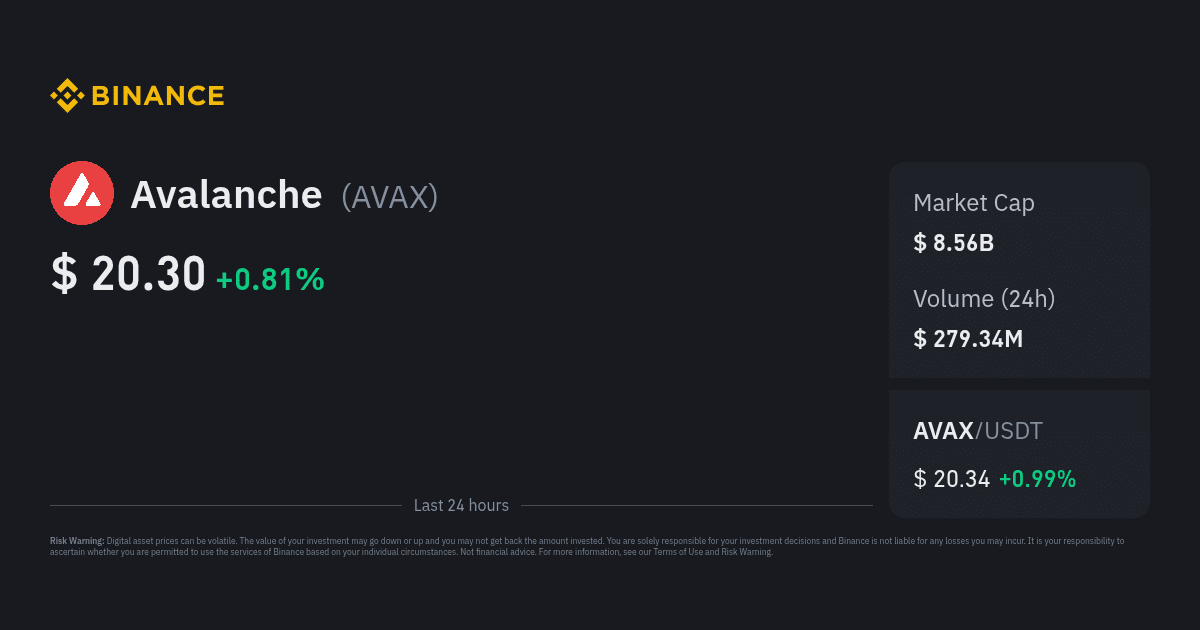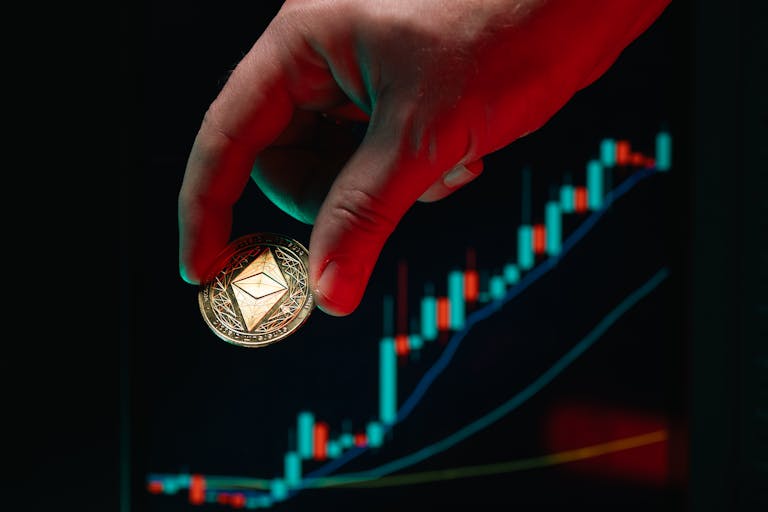Binance and Avalanche (AVAX): Driving Forces in the DeFi Growth Landscape
The rise of decentralized finance (DeFi) has revolutionized the cryptocurrency industry, offering users financial services without intermediaries. As DeFi continues to expand, blockchain ecosystems like Binance Smart Chain (BSC) and Avalanche (AVAX) have emerged as key players, each contributing uniquely to the sector’s evolution. While Binance and Avalanche are distinct platforms, their interplay has amplified DeFi growth, fostering innovation, accessibility, and adoption. This article explores how these two ecosystems are shaping the DeFi landscape and their collaborative potential.
Understanding DeFi: A New Era of Financial Freedom
DeFi, or decentralized finance, leverages blockchain technology to create open, permissionless financial systems. These include decentralized exchanges (DEXs), lending platforms, stablecoins, and yield farming protocols. Unlike traditional finance, DeFi operates on smart contracts, eliminating the need for banks or brokers. The sector’s growth has been fueled by demand for transparency, efficiency, and user control over assets.
Two public blockchains, Binance Smart Chain (BSC) and Avalanche (AVAX), have become hubs for DeFi innovation. While Binance is a centralized exchange (CEX) with its own chain, Avalanche is a decentralized blockchain designed for scalability and speed. Their intersection with DeFi highlights how both centralized and decentralized ecosystems can coexist and complement each other.
Binance’s DeFi Contributions: From Exchange to Ecosystem
Binance, the world’s largest cryptocurrency exchange by trading volume, has played a pivotal role in DeFi through its Binance Smart Chain (BSC). Launched in 2019, BSC is a blockchain platform that supports Ethereum-compatible smart contracts and DeFi applications, offering faster transactions and lower fees. Key contributions include:
-
BSC and DeFi Protocols:
Binance has supported numerous DeFi projects on BSC, such as PancakeSwap (a DEX), BunnyCord (yield farming), and BUSD (a stablecoin). BSC’s integration with Binance’s user base has driven massive adoption, with its Total Value Locked (TVL) surpassing $10 billion at its peak in 2021. -
Binance Launchpad and Binance Ventures:
Binance’s incubation programs, like Launchpad and Ventures, have funded and promoted DeFi startups, enabling them to gain liquidity and visibility. This has helped launch projects that later expanded to other chains, including Avalanche. - Cross-Chain Integration:
Binance has developed cross-chain bridges and partnerships to facilitate interoperability between BSC and other blockchains, including Avalanche. For example, users can move assets between BSC and Avalanche via bridges, enabling broader DeFi participation.
Binance’s role in DeFi is rooted in its ability to provide infrastructure, liquidity, and capital to projects, making it a critical player in the sector’s growth.
Avalanche’s DeFi Ecosystem: Speed, Scalability, and Innovation
Avalanche, founded by Ava Labs, is a high-performance blockchain platform designed to address Ethereum’s scalability and cost challenges. Its unique architecture, featuring subnets and fast finality, allows for rapid, low-cost transactions—ideal for DeFi applications. Key aspects of Avalanche’s DeFi growth include:
-
Avalanche’s Core Features:
- High Throughput: Processes over 4,500 transactions per second (TPS).
- Low Fees: Significantly cheaper gas costs compared to Ethereum.
- Interoperability: Supports cross-chain compatibility, enabling seamless asset transfers.
-
DeFi Projects on Avalanche:
- Trader Joe: A decentralized exchange (DEX) offering low-latency trades and yield farming.
- Aave on Avalanche (aAVAX): A lending protocol that allows users to borrow and lend crypto with minimal friction.
- Quickswap: A fork of Uniswap tailored for Avalanche, supporting liquidity pools and token swaps.
- Synthetix and DAI: Stablecoins and synthetic assets have found a home on Avalanche, expanding its financial services.
- AVAX Token’s Role:
The native token, AVAX, fuels the network’s operations. Users stake AVAX to validate transactions, pay fees, and participate in governance. As DeFi activity on Avalanche grows, the demand for AVAX increases, driving its adoption and value.
Avalanche’s focus on developer-friendly tools and interoperability has attracted a diverse range of DeFi projects, positioning it as a key competitor to Ethereum and BSC.
Binance and Avalanche: A Synergistic Relationship
While Binance and Avalanche are separate ecosystems, their collaboration has created opportunities for DeFi growth. Binance’s listing of AVAX on its exchange was a significant milestone, increasing liquidity and visibility for the token. Additionally, Binance’s cross-chain bridges and PegNet (a native bridge for Bitcoin) have enabled users to move assets between networks, fostering a multi-chain DeFi environment.
Key interactions include:
- Liquidity Synergy: Binance provides AVAX with access to a vast user base, while Avalanche offers a scalable platform for DeFi applications.
- Developer Ecosystems: Binance’s support for BSC has inspired developers to explore other chains like Avalanche, creating a ripple effect across the DeFi space.
- Investment and Partnerships: Binance has invested in Ava Labs and other Avalanche-based projects, recognizing the potential of its infrastructure for DeFi.
This partnership underscores the trend of multi-chain DeFi, where users and projects leverage the strengths of different blockchains to optimize performance and cost.
Challenges and Risks in DeFi Growth
Despite their contributions, both ecosystems face hurdles:
- Regulatory Scrutiny: DeFi’s decentralized nature often clashes with traditional financial regulations, creating uncertainty.
- Security Concerns: Smart contract vulnerabilities and rug pulls remain risks for users.
- Competition: Ethereum’s dominance, Solana’s speed, and BSC’s popularity pose challenges for both Binance and Avalanche to maintain relevance.
For Avalanche, the task is to sustain its growth in a crowded market, while Binance must balance its centralized reputation with the ethos of DeFi.
Future Outlook: The Road Ahead for DeFi on Binance and Avalanche
The future of DeFi on these platforms looks promising:
- Avalanche aims to expand its subnet capabilities, allowing enterprises and developers to build customized blockchains. This could attract more DeFi projects seeking scalability.
- Binance continues to innovate with initiatives like Binance Chain and its Wrapped Bitcoin (WBTC), integrating more assets into its ecosystem.
- Collaborative Potential: As cross-chain solutions improve, Binance and Avalanche may further collaborate, enabling users to access DeFi services across networks seamlessly.
DeFi growth will depend on addressing scalability, security, and user experience. With Binance’s infrastructure and Avalanche’s technical prowess, both platforms are well-positioned to lead in the evolving financial landscape.
Conclusion
Binance and Avalanche (AVAX) exemplify the dual forces propelling DeFi growth: centralized infrastructure and decentralized innovation. Binance’s role as a launchpad for DeFi projects and its support for multiple chains creates a bridge for Avalanche’s DeFi applications to reach wider audiences. Meanwhile, Avalanche’s high-speed, low-cost blockchain provides a robust environment for DeFi protocols to thrive. Together, they highlight the power of collaboration in a decentralized world, offering users more choices and opportunities in the DeFi space. As the sector matures, the interplay between these ecosystems will likely shape the future of blockchain-based finance.
In the journey toward a borderless, open financial system, the synergy between Binance and Avalanche stands as a testament to the potential of both centralized and decentralized solutions. Whether through listings, cross-chain bridges, or shared user bases, their combined efforts are driving DeFi into new frontiers.







